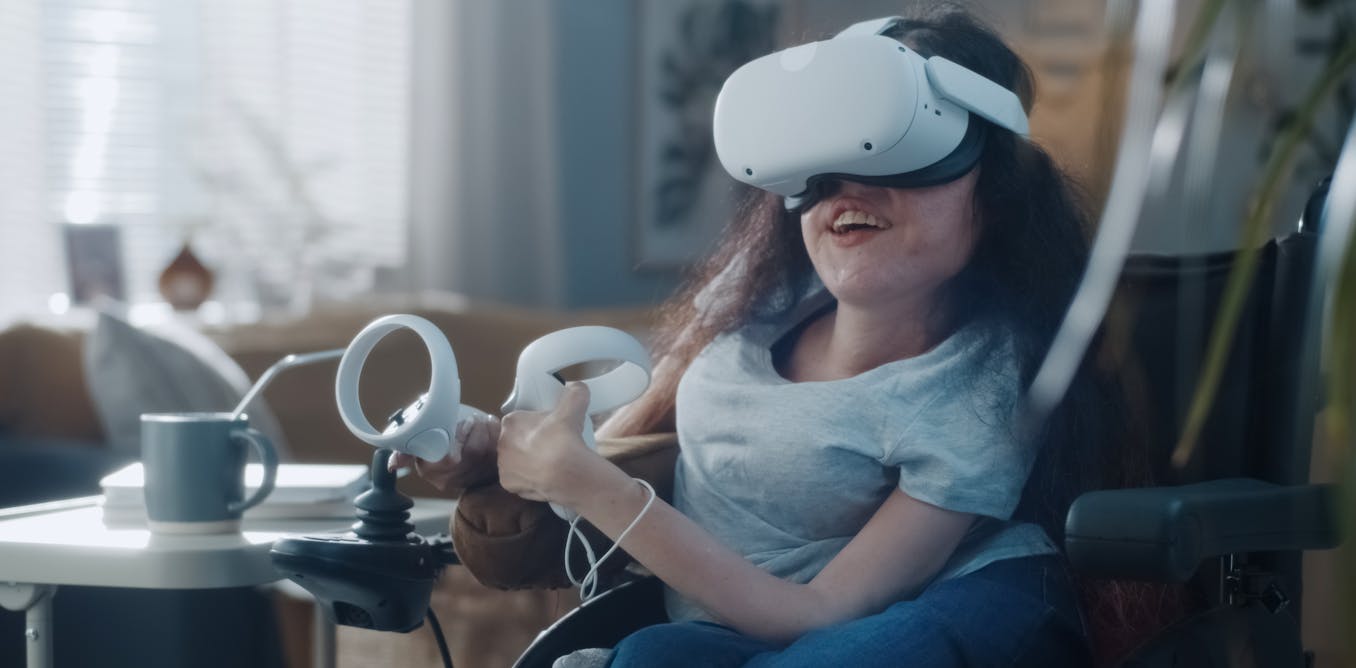The invention of the World Wide Web in 1989 ultimately brought life-changing tools for all who had access to it. Tools such as online banking, shopping, and communication have greatly increased the accessibility of everyday life for people with disabilities and seniors.
The concept of virtual mobility has long been used to describe how the Internet can provide accessible alternatives to activities that typically require physical travel. During the pandemic, virtual mobility has really taken off as work, entertainment, and socializing have effectively moved online. The metaverse, the next phase of the Internet powered by virtual reality and augmented reality (VR and AR), has the potential to take things even further.
Our research team will be working with Meta, the Royal National Institute of Blind People, and other inclusive design-focused partners to investigate the metaverse’s potential for life-changing benefits for disabled and older people, and develop solutions to improve accessibility and inclusivity in our new project, “Towards Fair Social VR.” Here are five areas where the metaverse has the potential to take virtual mobility to the next level:
1. Social life
The benefits that traditional social media offers to people with disabilities have been established for some time now, and if designed properly, metaverse social spaces could further these benefits through social virtual reality, mimicking face-to-face interactions and allowing people to interact freely without the barriers that exist in the physical world.
Importantly, users of metaverse platforms like Meta’s Horizon Worlds will be able to express themselves through virtual avatars, which research suggests are a way for some disabled people to reflect aspects of their disability as central to their identity.
Others might express themselves through entirely imaginary avatars. The metaverse gives users freedom and creativity in how they want to be seen, eliminating preconceived notions that people with disabilities or the elderly may face when interacting with others in person.
2. Education
The metaverse has the potential to increase the range and quality of education delivery pathways available to users with disabilities and older learners. Immersive technologies can make it possible to deliver higher education in an engaging way, without the need for physical attendance.
This method of delivery eliminates some of the barriers that prevent many people from receiving a quality education, such as the need to leave home or travel to a physical campus. There are also many opportunities to use the Metaverse for remote coaching, personal development, and skills training.
3. Work
The pandemic has shown us how quickly we can adapt to new ways of working. A significant number of people expect to work in some form in the metaverse. A recent Microsoft study found that of 31,102 survey participants across generations, only 16% did not expect to perform at least some of their job functions as “metawork” in the near future.

Most people expect the metaverse to play some role in their jobs in the near future. DisobeyArt / Shutterstock
The metaverse provides access to types of jobs that are difficult to access in the real world due to disability or age. There is a growing community of designers who are preparing to create virtual interiors that exist only within the metaverse. Other areas with interesting metaverse-based job prospects are digital fashion, real estate, and of course building the metaverse itself.
Read more: The Metaverse seems less disruptive and more normal than it should be – here’s why
4. Entertainment and Leisure
The pandemic has brought music into the digital world in new ways, with artists from Travis Scott to Ariana Grande performing virtually.
Going live in the metaverse is just one entertainment option. Virtual cinemas, plays, exhibitions in museums and galleries and many other events are already happening. Tourism is another area where the metaverse can offer the opportunity to travel in digital environments. Tourists can even explore far-flung physical locations with virtual reality headsets from the comfort of their own home, making travel more accessible and affordable.
5. Healthcare and Wellness
The metaverse can also be a powerful platform in the medical world, helping many different medical disciplines. For example, extended reality (XR) simulations can be used for many types of medical education and training, including emergency response and mental health. VR and AR can also enhance medical imaging in radiology to support diagnosis, treatment planning, and medical research.
Another area of healthcare where the metaverse has potential is telemedicine: VR can be used to facilitate remote consultations, especially in areas where healthcare professionals are geographically unavailable, such as in many rural areas.

The metaverse also has potential in the healthcare sector. PintoArt / Shutterstock
It is important to note that the Metaverse does not replace living and experiencing the physical world, but rather offers a new option. To realize its potential, however, the Metaverse must be built to be accessible, inclusive, and equitable for everyone, regardless of ability or age.
This applies not only to functional aspects (ease of use of the technology) but also to social factors (how we present our disability or age). Other challenges may arise regarding privacy, security, safety, communication and ethical behavior.


